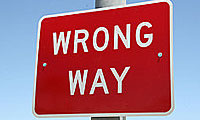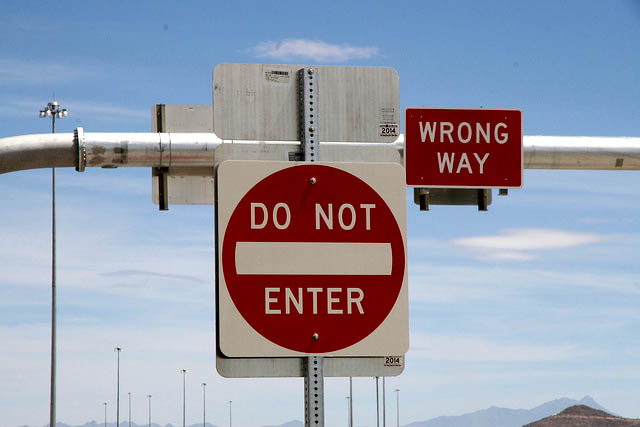Many steps already taken on wrong-way driving, but more to come
Many steps already taken on wrong-way driving, but more to come

By Gant Wegner / ADOT Communications
Wrong-way driving.
No issue has prompted more people to contact ADOT over the past year. We have received hundreds of emails, calls and letters expressing concern that some drivers – almost always impaired by alcohol or drugs – are able to drive onto a freeway going in the wrong direction.
People are outraged that innocent motorists driving in the right direction are injured or killed in crashes with vehicles going the wrong way. We are too.
Those who reach out often ask what ADOT is going to do to stop wrong-way drivers.
We answer that ADOT has taken significant steps to address wrong-way driving and continues to seek ways to reduce the threat. Safety is our top priority in everything we do.
Our crews have installed larger and lowered "Wrong Way" and "Do Not Enter" signs in better view of drivers at dozens of highway ramps. We have added attention-getting wrong-way pavement arrows outlined by bright red reflectors on freeway ramps. We are testing wrong-way vehicle sensor technology that could be used to alert motorists, state troopers and other emergency responders to a driver going the wrong way.
Many of those contacting ADOT say we should install tire spike strips to blow the tires of wrong-way vehicles. You’ve probably heard the loud clank as you’ve driven over these spring-loaded spike strips at rental car parking lots and other places where vehicles are prevented from driving in or out for security reasons.
As enticing as that idea seems, there is no place in the world where spikes are used on highway systems. Other states have studied the possibility and determined that spikes wouldn't work, including a detailed engineering analysis by the Texas Department of Transportation that found:
- Spikes are designed for slow speeds/low-volume traffic and are not guaranteed to damage the tires of vehicles traveling at higher speeds.
- Broken spikes can damage tires of vehicles traveling in the right direction.
- Right-way drivers can create unsafe situations by slowing down quickly for spike strips.
- Spikes can be a hazard to motorcycles and small cars.
- Spike strips are slippery when wet and prone to getting clogged with dirt and snow.
ADOT appreciates all the feedback we have received on wrong-way drivers. This kind of engagement is what we want to have with you, our fellow motorists.
Safety engineering can only do so much. Most cases of wrong-way driving are a direct result of impaired driving, and to truly address the danger everyone must focus on making better decisions before getting behind the wheel.

